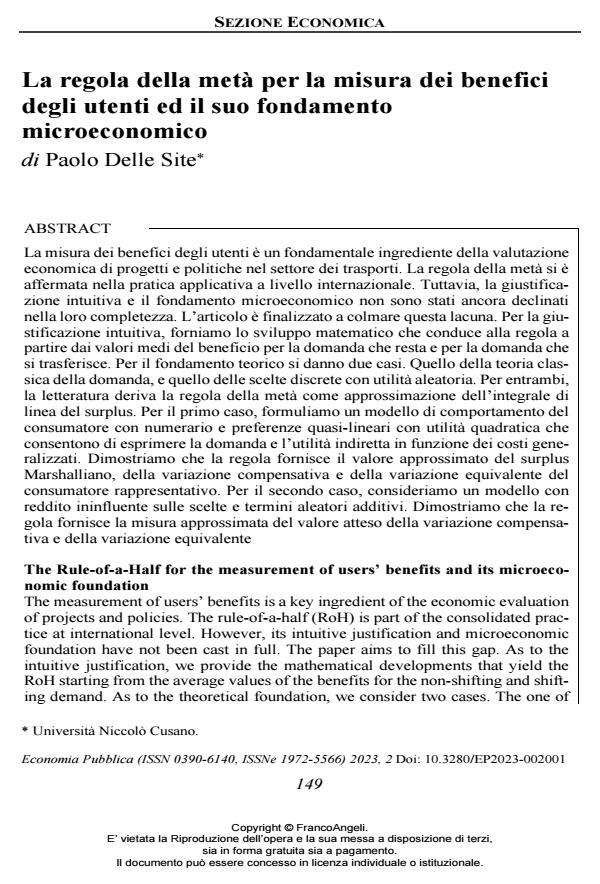The Rule-of-a-Half for the measurement of users’ benefits and its microeconomic foundation
Journal title ECONOMIA PUBBLICA
Author/s Paolo Delle Site
Publishing Year 2023 Issue 2023/2
Language Italian Pages 21 P. 149-169 File size 203 KB
DOI 10.3280/EP2023-002001
DOI is like a bar code for intellectual property: to have more infomation
click here
Below, you can see the article first page
If you want to buy this article in PDF format, you can do it, following the instructions to buy download credits

FrancoAngeli is member of Publishers International Linking Association, Inc (PILA), a not-for-profit association which run the CrossRef service enabling links to and from online scholarly content.
The measurement of users’ benefits is a key ingredient of the economic evaluation of projects and policies. The rule-of-a-half (RoH) is part of the consolidated prac- tice at international level. However, its intuitive justification and microeconomic foundation have not been cast in full. The paper aims to fill this gap. As to the intuitive justification, we provide the mathematical developments that yield the RoH starting from the average values of the benefits for the non-shifting and shift- ing demand. As to the theoretical foundation, we consider two cases. The one of classical demand theory, and the one of discrete choices with random utility. For both, literature obtains the RoH as an approximation of the surplus line integral. As to the first, we formulate a consumer’s behaviour model with numéraire and quasi-linear preferences with quadratic utility that allow demand and indirect util- ity to be expressed as function of generalised costs. We prove that the RoH pro- vides the approximate value of the Marshallian surplus, compensating variation and equivalent variation of the representative consumer. As to the second, we con- sider a model without income effect and additive random terms. We prove that the RoH provides the approximate value of the expectations of the compensating var- iation and equivalent variation.
Keywords: compensating variation, discrete choice, equivalent variation, random utility, rule-of-a-half
Jel codes: D11, D60
Paolo Delle Site, La regola della metà per la misura dei benefici degli utenti ed il suo fondamento microeconomico in "ECONOMIA PUBBLICA " 2/2023, pp 149-169, DOI: 10.3280/EP2023-002001